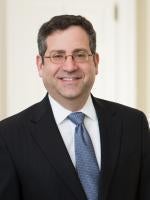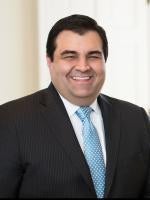By all accounts, 2014 was a banner year in False Claims Act (FCA) enforcement, with the Department of Justice (DOJ) announcing a record $5.69 billion in FCA recoveries. 2015 promises to be an equally active year and is already off to an eventful start. Government contractors and the defense bar can expect to see a marked increase in prosecutorial scrutiny of qui tam suits in the wake of the DOJ’s September 2014 announcement that criminal prosecutors will systematically review all newly filed qui tam actions. And, in February, the U.S. Courts of Appeals for the Fourth and Sixth Circuits both reached decisions that expand FCA liability by limiting the reach of the public disclosure bar to qui tam suits filed in those jurisdictions. In the meantime, the U.S. Supreme Court prepares to rule on an effort by the DOJ to gut the FCA’s statute of limitations and to narrow the FCA’s “first to file” bar. The following is a summary of these recent FCA developments and their implications.
Ground Floor Review of Qui Tam Complaints by the DOJ’s Criminal Division
Government contractors can expect increased scrutiny of qui tam suits by federal criminal prosecutors. In September 2014, Assistant Attorney General for the Criminal Division Leslie R. Caldwell publicly announced that the Fraud Section of the Criminal Division would be “stepping up” its commitment to working with qui tam relators and that “[q]ui tam cases are a vital part of the Criminal Division’s future efforts.” As part of that initiative, Assistant Attorney General Caldwell stated that “experienced prosecutors in the Fraud Section are immediately reviewing the qui tam cases . . . to determine whether to open a parallel criminal investigation,” and coordinating with the Civil Division and U.S. Attorney’s Offices regarding potential criminal issues requiring investigative support. During her address, Assistant Attorney General Caldwell specifically discussed the Criminal Division’s prior work related to Medicare and defense procurement fraud and stated that, “We are also looking at proliferation of sales to the military of counterfeit intellectual property and technology.”
In addition, Assistant Attorney General Caldwell encouraged the relator’s bar to not only aggressively file civil qui tam actions, but to also “reach out to criminal authorities in appropriate cases, even when [they] are discussing the case with civil authorities.”
In light of the DOJ’s announcement, we are likely to see an increase in criminal investigations spurred by the filing of qui tam actions. Consequently, we may see a broader range of investigative agencies, including the FBI, involved in such investigations, and an uptick in grand jury subpoenas issued prior to or in conjunction with Civil Investigative Demands. We may see civil FCA actions pursued against corporate defendants while the DOJ brings criminal charges against corporate executives or other individuals who participated in alleged fraud against the government.
A Weaker Public Disclosure Bar?
In February 2015, the United States Courts of Appeals for the Fourth and Sixth Circuits expanded defendants’ potential liability under the False Claims Act by adopting a narrower interpretation of the public disclosure bar than have other courts. See United States ex rel. Wilson v. Graham Cnty. Soil & Water Conservation Dist., No. 13-2345, 2015 WL 427649 (4th Cir. Feb. 3, 2015); United States ex rel. Whipple v. Chattanooga-Hamilton Cnty. Hosp. Auth., No. 13-6645, 2015 WL 774887 (6th Cir. Feb. 25, 2015). The “public disclosure bar” is a key limitation that bars non-intervened qui tam suits that assert “substantially the same allegations or transactions” as were previously publicly disclosed through a number of enumerated ways (e.g., in prior federal litigation, in a federal audit or investigation, or in the media). See 31 U.S.C. § 3730(e)(4)(A). The public disclosure bar precludes qui tam lawsuits where there is no need to reward a whistleblower to come forward because the allegations have already been the subject of a public disclosure.
In both Graham County and Chattanooga-Hamilton, the defendants argued that the qui tam relator’s fraud allegations had been publicly disclosed through communications with various government agencies that also investigated the respective allegations. Both the Fourth and Sixth Circuits rejected the defendants’ arguments, and disagreed with the Seventh Circuit’s view that information is “publicly disclosed” if it has been disclosed “to a competent public official.” The courts held that to trigger the public disclosure bar, the information must have been disclosed to some members of the public outside of the government. The Fourth Circuit also specifically rejected the argument that the reports containing the allegations would have been publicly available from the government through a public records request.
Consequently, government contractors can expect that, in certain jurisdictions, it may be more difficult to rely on the public disclosure bar in non-intervened qui tam cases where the government is already investigating (or has investigated) allegations that have not been disclosed beyond the government.
Expansion of Wartime Tolling and Narrowing of the “First-to-File” Bar
The U.S. Supreme Court is expected to rule in Kellogg Brown & Root Services, Inc. v. United States ex rel. Carter (No. 12-1497), in which it granted certiorari to the United States Court of Appeals for the Fourth Circuit to consider two critical FCA issues.
First, the Supreme Court will consider whether the Wartime Suspension of Limitations Act, 18 U.S.C. § 3287 (WSLA), a provision of the criminal code that tolls the statute of limitations for any offense “involving fraud or attempted fraud against the United States or any agency thereof in any manner” while the “United States is at war” must be triggered by a formal declaration of war, and whether WLSA applies to civil claims. The Fourth Circuit reasoned that, when Congress amended the WSLA in 1944 to delete the words “now indictable” in describing the word “offense,” it intended to expand the WSLA to civil claims. The Fourth Circuit also determined that a formal declaration of war is not a prerequisite to wartime tolling under WLSA, and that the United States’ lengthy conflict in Iraq was a sufficient trigger. The DOJ has argued in a number of cases that the United States’ military interventions in Iraq and Afghanistan tolled the statute of limitations for FCA cases and that the FCA statute of limitations will continue to toll until the president or Congress announces a formal end to the United States’ participation in those conflicts. At oral argument, many of the justices expressed skepticism over the DOJ’s position, which would effectively eliminate the FCA statute of limitations.
Second, the Supreme Court will consider whether the FCA’s “first-to-file” bar, 31 U.S.C. § 3730(b)(5), permits relators to file qui tam actions asserting duplicative claims so long as no prior qui tam action with a duplicative claim is pending at the time of filing, an issue that has split the Fourth, Seventh, and Tenth Circuits and the First, Fifth, Sixth, Ninth, D.C., and Federal Circuits. A number of Circuit Courts have held that a qui tam action is barred if a prior qui tam action asserted substantially the same allegations, even if the prior action had been dismissed and was not literally pending when the later action was filed. By contrast, the Fourth Circuit held that the prior qui tam action must be literally pending (and not have been dismissed) in order to trigger the “first-to-file” bar over a later action. If upheld, the Fourth Circuit’s decision could expose defendants to repeated qui tam suits over the same allegations by different relators after prior cases are dismissed.
The Supreme Court heard oral argument on January 13, 2015.
Conclusion
To date, 2015 has brought expanded scrutiny of qui tam suits by criminal prosecutors and has undermined defenses upon which FCA defendants have long relied. While it remains to be seen whether the Supreme Court will further expand the FCA litigation risks facing defendants, one thing is sure: it is critical for government contractors to stay abreast of these developments.







 />i
/>i

